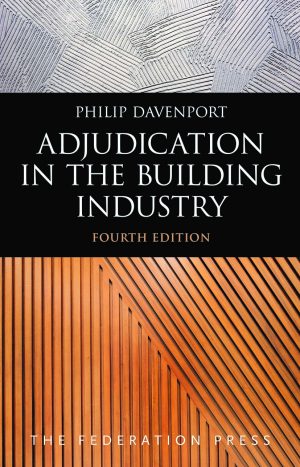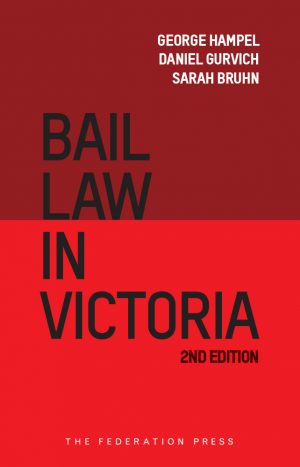Construction Claims, fourth edition was cited in Allianz Australia Insurance Ltd v Probuild Constructions (Aust) Pty Ltd [2023] NSWCA 56
Statutory compulsory rapid adjudication has now spread to all States, the Northern Territory and the ACT. The fourth edition of this book covers the following topics which commonly arise:
- variations
- extensions of time
- delay and disruption
- liquidated damages
- penalties
- time bars
- global claims
- quantum meruit
- set-off and abatement
- cross-claims
- termination of the contract
- waiver and estoppel
This book is for parties to building or construction contracts, their consultants and lawyers and all who are interested in or studying construction law.
IntroductionWhy categorise claims and remediesLegal categories of claim Categorising remediesVariation claimsInterestTime-related claimsQuantum meruit claimsClaims after termination by frustrationDefective work claimsLicensing and building claimsDefences Claims after terminationThe penalty doctrineThe deemed trustGlossary of termsIndex
As well as being a useful “how to” guide to preparing construction claims (or defences), the fourth edition of this text provides a valuable discussion of current construction law issues.
Catherine Bell, Victorian Law Institute Journal, April 2021
Now in its fourth edition, Philip Davenport’s Construction Claims is a text that will find a secure place at the desk of those specialising in construction disputes—the depth and engagement of the content across existing precedent and more recent applications of the law makes this text an active conversation with what direction the law has moved in and also where it is likely to head.
Australian Construction Law Newsletter, Issue 197, 2021
Reviews of previous editions:
Philip Davenport is one of Australia’s most experienced construction lawyers. In the second edition of this book, he shares the benefit of that experience by way of insights and advice on the myriad issues which construction participants might encounter in framing or defending claims arising in relation to construction work.
He deals with both fundamental conceptual issues and the more detailed matters which apply specifically to construction claims. …
A prominent feature of this new edition is the taking into account of a development which Mr Davenport regards as having revolutionised construction claims: the enactment of security of payment legislatbr />ion in many states and territories. In addition to revisions throughout the text, a useful summary of the legislation is provided.
Law Institute Journal (Victoria), April 2007
As a legal text, Construction Claims is an easy read. The content is arranged under clear headings and practical examples support the text by using case law and articulate explanations. The tables of statutes and cases and the index assist with legal research. Davenport is clearly knowledgeable and brings 30 years experience to this text…Davenport has been very thorough in updating this edition, published 10 years after the first edition. In addition, he as authored a similar text titled Adjudication in the Building Industry (also published by the Federation Press) that is pitched at a procedural level. It includes a handy collection of New South Wales, Victorian and New Zealand forms. Construction Claims and Adjudication in the Building Industry certainly make a nice pair. It would be advantageous to acquire both for your collection.
Australian Law Librarian, Vol 15 No 2, 2007
All litigation lawyers would find the early chapters stimulating and thought-provoking. Few experienced construction lawyers would read this work without having gained from it. All construction lawyers would benefit from having it to hand.
Australian Law Journal, March 1996
The author has succeeded in presenting this difficult branch of the law in a manner which is different from that of standard textbooks and is written in such a way as to hold a student’s attention.
The book will also be useful in enabling practitioners to decide what remedy is available for a particular set of facts and how such remedy can be enforced; practitioners will be glad to see the last chapter deals with costs!
The Law Letter (Law Soc of Tas), March 1996
… shortcomings not withstanding, this book is well written for its target audience [students of construction law, building, architecture, engineering and so on]. With its conciseness and clarity, it should prove useful for readers seeking an introduction to diverse areas of construction law.
Law Institute Journal (Victoria), April 1996
There is a particularly good chapter on licensing and building claims and, given the recent law in Queensland on the ability of unlicensed builders to claim in quantum meruit, this chapter, alone, is well worth reading.
The text is a good introduction to construction claims and [Davenport] has achieved his aim of keeping the text simple in order to explain the basic nature of claims which most commonly arise out of construction contracts.
Proctor (Qld Law Soc), August 1996








